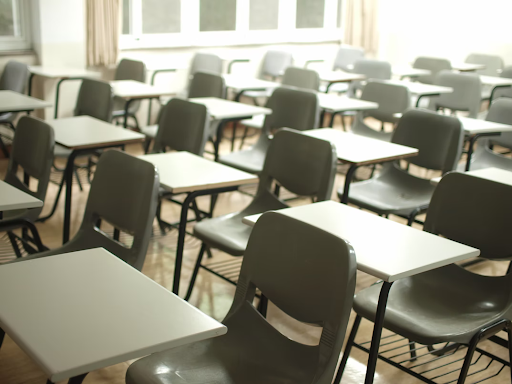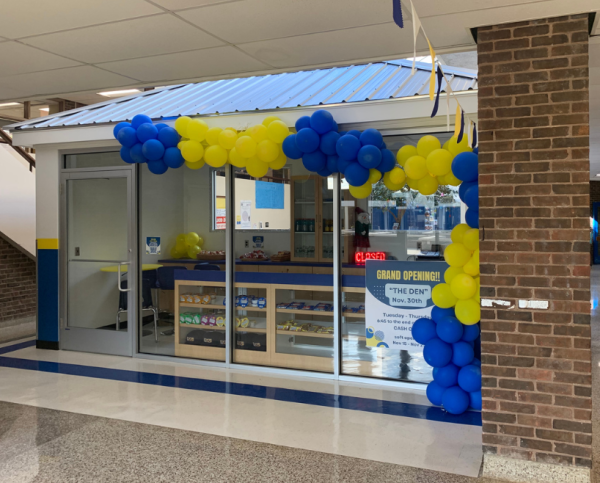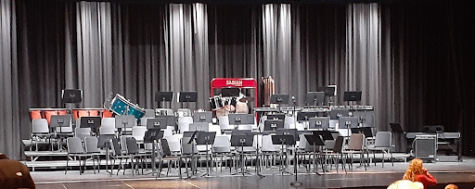The Return to ‘Normal’ in Classroom Structure

Image of a classroom preceding and post-pandemic-spacing. Image provided by MChe Lee from unsplach.com.
After a long 2020-21 school year, spread out classrooms and strict restrictions at the high school are finally being removed as we return to a more “normal” class structure. As the year starts and everyone gets accustomed to the smaller, tighter classrooms it seems that everyone is a big fan—teachers and students alike.
Teachers, such as Mrs. Sara Trenn, an English teacher at the high school, are enjoying a greater ease of teaching that is provided in the smaller classrooms. Now, all students are able to hear the teacher, and nobody has to worry about volume and competition to be heard, the way they did in the library or auditorium last year.
“I am very grateful for the return to smaller classrooms this year,” said Mrs. Trenn.“Last year, almost all of my classes were held in the library. This was nice because I had immediate access to library resources and to the librarian, Ms. Hanson. However, we also had to compete with the volume of up to three other classes taking place at the same time. Whenever any of us had to play a video, we felt terrible and were always so paranoid about the volume of the audio.”
Students also prefer the smaller classrooms. Again, the reduced need of having to compete with the volume of other teachers is taken for granted, and the smaller classrooms allow everyone to hear and see what their educator is trying to teach.
“While returning to smaller classrooms proved to be something of a system shock initially, the newfound novelty has admittedly worn off. They have proven their usefulness for things such as being able to see the board easier and being able to be in a single classroom, without the distractions of neighboring classes. The proximity of [these larger, closer classrooms] was necessitated by the need to use every possible square inch that could be dedicated to instructional spaces in order to allow for a full-time return to in-person learning,” senior James Melanson said.
It seems no one wants to go back. Sure, some people enjoyed the larger classrooms and excess of space last year, but the overall advantages of the smaller, original classrooms far surpass the larger ones. The classes were too large and there was excess competition for just being heard in the larger spaces, as opposed to what the rooms used to be like.
“I do like to be in a larger space with alternative work spaces—like tables as opposed to desks—at times. But for daily lessons, my preference is to be in the smaller classrooms,” said Mrs. Trenn.“I think the students probably prefer this setup as well. It allows them to be closer to their peers and closer to the SMART Board.”
Though everyone is enjoying the smaller classrooms, it is clear that to some it doesn’t really matter, as is the opinion of Mr. Brendan Gilley, another high school English teacher, expresses how he just loves to teach, no matter the class structure. And though the larger, more spaced out classrooms were integral in allowing every student an in-person school year last year, which most everyone is grateful for, he and most others are still enjoying the smaller classrooms more for many of the same reasons previously stated.
“I would not want to go back to the larger spaces because I feel that I am able to interact with my students in a more meaningful way now,” said Mr. Gilley. “It’s much easier for me to check on everyone’s progress when the desks are spaced three feet apart. If we ever did go back to the larger spaces, I wouldn’t mind too much because I love to teach, and as long as I’m given a room to teach in, I’ll make it work!”












